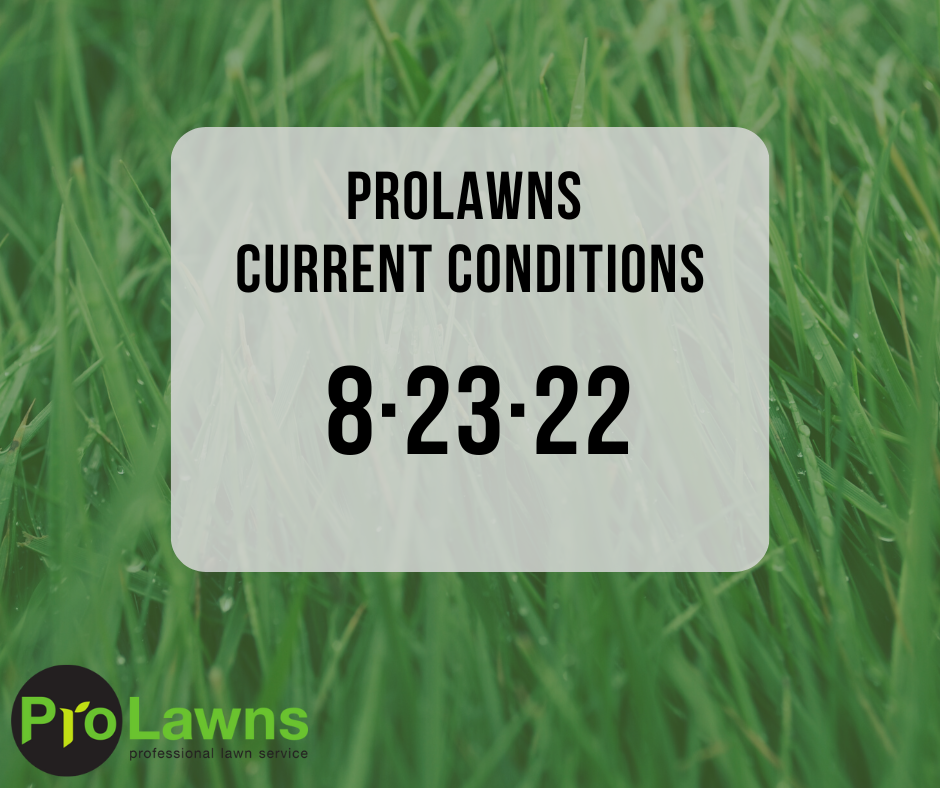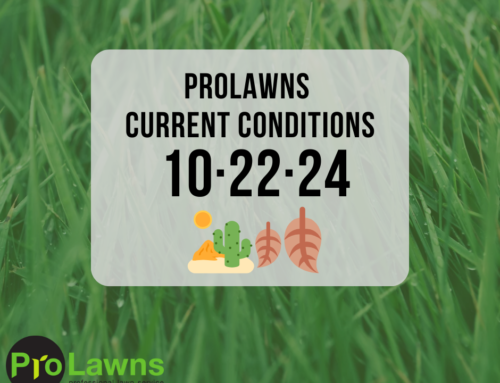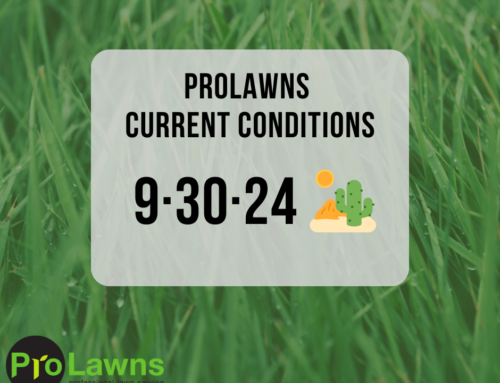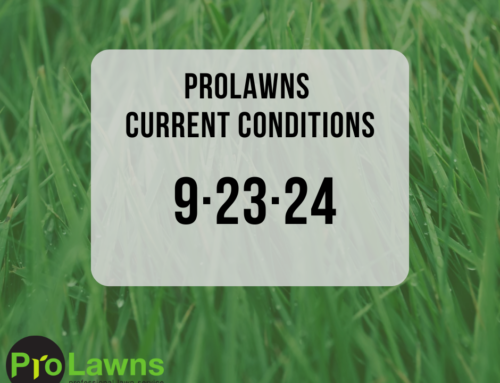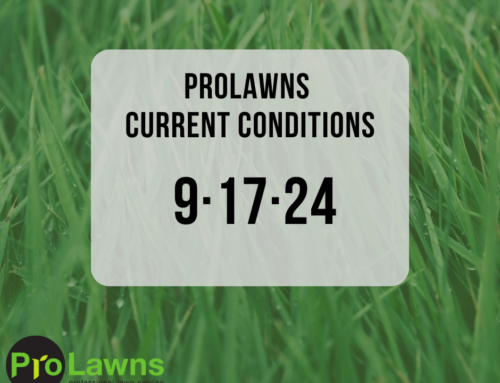What we’re noticing:
- We’ve had plenty more regular rain and cooler temperatures that the lawns have responded great to.
- In addition to the flash growth in turf, we’ve seen a surge in weed pressure. Weeds like Creeping Charlie that prefer wet weather have tried to pack a summer’s worth of spreading into the last couple weeks.
What we’re doing:
- We will be wrapping op our 3rd visit and starting our Fall Applications this week. Wow! More on this below.
- We’re right in the middle of our Fall Renovation season including Core Aeration, Overseeding and Soil Improvement.
What you can be doing:
- Resume normal watering as needed based on conditions.
- Resume normal mowing based on conditions. If you choose to reduce your mowing height, do it in stages 1/4″-1/2″ lower per mowing
About our Fall Application:
- Timing – Many companies perform this application in October with granular fertilizer and while this is common practice, it is far from the best thing for our lawns and environment. Our lawns are switching from “upward” top growth to “downward” root growth right now as temperatures start to decrease. In October, they are switching from downward growth to dormancy. Dormant turf does not take in nutrients. These are not snap-of-the-finger transitions; lawns begin taking in less and less nutrients as we go into October with everything applied at the end of the month simply running off the lawns and into our waterways.
- The average first 28* freeze date for the Twin Cities is between Oct 11th and Oct 20th (Source) with frequency of freezes increasing as the calendar progresses.
- In accordance with common sense and the University of Minnesota: “Do not apply fertilizer if the forecast is for a hard freeze within a week of application, and never apply fertilizer to frozen ground or snow-covered ground. To ensure nutrients in the fertilizer stay held where applied, they need time to react with the soil… If the ground is frozen, those nutrients won’t hold in the soil.” While every year is different, it obviously makes sense to plan to have our fertilizer down before Oct 3rd to ensure it does not run-off into our environment and is taken in to be used by our turf so you get your money’s worth.
- What – Also in contrast to most other companies, we apply liquid fertilizer during our Fall Application as opposed to granular fertilizer for a couple reasons:
- Granular fertilizer is basically set on top of the soil where it waits for rain in the Fall. Depending on the amount of rain, it starts to break down into the nutrients that are available to the grass. These nutrients then navigate down through the soil and hopefully make contact with and are taken in by the grass roots. This process takes 1-2 weeks with an immediate rain and accordingly longer if it takes a while for a significant rain. Likely a fraction of the nutrients in granular fertilizer applied after mid-September will be of benefit to your lawn. This is worsened if the granular fertilizer has “slow release” content. And no, the slow release granular fertilizer does not wait until Spring. It is just wash off the frozen ground with the winter snowfall and early Spring rains.
- Liquid Fertilizer is applied right on the grass in the form immediately available to the grass. There is no wait or transition period. None is lost to run-off and significantly less is lost to the soil leaching. That fertilizer is taken in by the grass and nutrients are sent to the roots for winter storage starting the moment it hits the grass blade. You’ll see the results of this with wildly healthy and green grass very early next Spring.
- Fall is the best time to control broadleaf weeds. The same downward flow of fertilizer applies to the downward flow of our weed control products into the core of the invasive weeds that might try to invade your lawn. The specific products that we use going to the core of the weed this time of year ensure a blank slate when it comes to weeds next year. Broadleaf weed control is only efficiently achieved with a liquid application. There are granular products that advertise broadleaf weed control but they would be, at most, 50% as effective as liquid.
- Granular fertilizer is basically set on top of the soil where it waits for rain in the Fall. Depending on the amount of rain, it starts to break down into the nutrients that are available to the grass. These nutrients then navigate down through the soil and hopefully make contact with and are taken in by the grass roots. This process takes 1-2 weeks with an immediate rain and accordingly longer if it takes a while for a significant rain. Likely a fraction of the nutrients in granular fertilizer applied after mid-September will be of benefit to your lawn. This is worsened if the granular fertilizer has “slow release” content. And no, the slow release granular fertilizer does not wait until Spring. It is just wash off the frozen ground with the winter snowfall and early Spring rains.

